Modern Wargaming: Conflict In The Ukraine Part One – Overview & First Engagements
October 26, 2015 by crew
Community members at Beasts of War may be familiar with my articles revolving primarily around gaming in the Second World War. In an effort to keep things interesting and to “expand my range,” this new article series will shift to a much more current conflict, the ongoing fighting in the Ukraine.
Such conflicts, however, can be tricky topics to handle in a wargame. After all, while you won’t ruffle too many feathers with a battle from the 1400s, when it comes to a war that is much more recent, delicate care must be taken in how the subject is approached.
"Today's War" - Why Game It?
Perhaps the first question when setting up current-conflict wargames is “why do it?” The roots may lie in why we play wargames in the first place. Sure, it’s always to “have fun,” but what defines “fun” at a gaming table can vary widely from group to group. In all honesty, current-conflict wargames may not be for you.
Many people who play modern wargames are themselves veterans of the armed forces, who have a keen, personal interest in the conflict in question. There’s certainly nothing wrong with this, but bear in mind that such games might not be terribly objective. It’s hard not to see one side or the other as the bad guys when it’s “your” war.
Other gamers see themselves more as “analysts.” They want to examine actual battles (whether they occurred five centuries ago or five minutes ago) and see what made them unfold the way they do. For many such gamers, research and game design are as important as building and painting miniatures.
There are some gamers for whom current-conflict wargames may not be a great fit. Competitive gamers should be especially careful. Wiping the floor with your opponent is always fun in Warhammer 40,000 or X-Wing, but perhaps not when CNN and BBC are still showing crippled civilians and masses of refugees straight from “your table.”
Also, detail-driven “rivet-counters” might have a hard time with the pervasive ambiguity when it comes to conflicts this recent. No one’s written dozens of books on these wars yet. Much of the information will still be classified and ALL of it will be horrendously slanted one way or the other. Prepare for a lot of guesswork.
For those who choose to pursue current-conflict gaming, the rewards can be great. After all, this isn’t dusty, boring history (yawn) no one cares about – nor the “geeky” Sci-Fi or Fantasy that cause non-gamers to patiently roll their eyes. This is happening NOW, every time people turn on the television. If done right, current-conflict wargaming comes with an almost “built-in” respectability. After all, you’re not a gamer. You’re an analyst!
Fortunately, there are some great systems and product lines to help you get started. Spectre Miniatures have great 28mm moderns and have recently started rolling out rules. Empress Miniatures also have great rules and miniatures, especially vehicles that have been featured on recent Beasts of War “What’s In The Box” episodes.
Ambush Alley Games also has the “Force on Force” system, a favourite of many community members who tackle modern-era wargames. In fact, this is the system we’ll be using for many of our games depicting skirmishes that have taken place recently in Ukraine.
Perhaps the simplest reason to wargame current conflicts is that it keeps you informed about important events of our time. In Syria, the Cold War may have restarted. Putin seems to pose an ever-greater threat. China’s shadow stretches ever-longer across the Pacific. Not to sound preachy, but these are events about which we should all be at least somewhat aware.
The Ukraine - Origins Of The Conflict
To understand how and why the Ukrainian War was fought (and who was fighting it), we should take a quick look at the recent history of Ukraine.
Note that I’m referring to the war in the past tense, in just the last month or two the Minsk II cease-fire seems to be finally taking effect. Knock on wood, touch cloth, and call me an optimist, but as of this writing the war seems to be drawing to a close.
Formerly part of the Soviet Union and before that the Russian Empire, Ukraine has only been an independent country since 1991. Ethnically and culturally, the country is sharply divided between east and west, and it is along this fault line that the country broke in early 2014.
In November 2013, the faltering Ukrainian government (long plagued by rampant corruption) was poised to sign a historic trade agreement with the EU. President Viktor Yanukovich, however, was secretly negotiating closer ties with Russia’s President Vladimir Putin.
On November 21st, the government about-faced and announced no EU agreement would be signed. Protesters immediately flooded into the “Maidan,” the Independence Square in the capital of Kiev. Huge demonstrations demanded an immediate change in government.
The government crackdown was brutal, especially by the “Berkut” (Eagle) police paramilitaries. The protests lasted ninety-two days, during which central Kiev was effectively a warzone. Constant clashes would ultimately kill 125 people, with almost 2,000 injured and sixty five still ominously “missing.”
Finally, Yanukovich caved on February 22nd, 2014. He fled the country via helicopter in the middle of the night and was given asylum in Russia. The interim government called for the election of a new president on May 25th, and eventually signed an agreement to join the EU. The Berkut was disbanded, but reformed under Russian control.
Reaction In The East
While the Maidan movement was widely celebrated as a populist victory against a corrupt and brutal government, reactions in Ukraine’s eastern districts were a mixture of horror and rage. In many cities like Khar’kov, Donetz, and Luhansk, counter-protests immediately broke out and government buildings were stormed and occupied.
In all fairness, these fears are not completely unfounded. Eastern Ukrainians saw the Maidan movement as the “Kiev Junta,” an illegal overthrow of their elected government. Pro-European leaders in Kiev have a long history of corruption and embezzlement, and there was even talk of outlawing the use of the Russian language.
Also, there is a dangerous far-right streak in western Ukraine, most notably in the group known as “Right Sector.” Pro-Kiev Ukrainian militia have been photographed wearing swastikas and giving Nazi salutes. Certain “volunteer battalions” have insignia clearly drawn from the Waffen SS. Many are also admitted “Banderists,” named after a Ukrainian nationalist leader who briefly collaborated with invading German forces in World War II.
While such elements certainly do not represent the majority of the pro-Ukrainian forces, it should be kept in mind that there WERE two sides to this war. The people in Eastern Ukraine do not trust Kiev, the EU, or the West, and want to remain close with Russia. When the Maidan movement swung Ukraine toward Europe, they reacted.
The War Begins
On April 7th, 2014 a referendum was held in the east Ukrainian city of Donetz, proclaiming the Donetz People’s Republic (DPR). A similar republic was soon declared in nearby Luhansk (Luhansk People’s Republic, or LPR). Together they formed the “Federation of Novorossia” (New Russia), announced they were no longer part of Ukraine, and reached out to Russia for help.
April 18th saw the first large-scale Ukrainian military movement into these areas, naturally intent on shutting down these pro-Russian separatists. But the Ukrainian Army, after years of neglect and corruption, was hardly ready for a war.
Ukrainian troops were also often reluctant to fire on “fellow countrymen.” Whole armoured columns allowed themselves to be stopped by crowds of civilians, disarmed, and sent walking home. The weapons and vehicles were promptly handed over to the growing separatist militias of the DPR and LPR.
Pro-government Ukrainian militias, however, were all too ready to engage separatist rebels. Fighting quickly broke out, with one particularly intense skirmish taking place near Krasnoarmeysk on May 1st, 2014. This was the focus of our first “Force on Force” game detailed in the photos above.
A New President, A New War
On May 25th, the promised elections for a new Ukrainian president took place. Petro Poroshenko was the clear winner, a wealthy businessman widely known as the “Chocolate King” because of his huge candy business. He promised to follow through on most of the demands posed by the Maidan movement.
Within hours of Poroshenko’s election, DPR separatists attacked and occupied the Donetz International Airport. Poroshenko, however, decided to start his administration with a show of strength. In the first set-piece battle of the war, the Ukrainian Army assaulted the airport, complete with jet aircraft and Mi-24 “Hind” attack helicopters.
This was a big fight, tackled through an obviously-modernized variant of Avalon Hill’s classic Panzer Leader. The Ukrainians won this battle, mostly through overwhelming firepower, and retook the airport by morning of May 26th. The war was just getting started. Many more battles were to come, some at this very same airport.
Thus begins our new article series on the Ukrainian Conflict. What do you think so far? What are your thoughts on wargaming this conflict, or modern wargaming in general? Post below and keep the conversation going, and of course stay tuned for more to come.
If you would like to write an article for Beasts of War then please contact me at [email protected] for more information!
"If done right, current-conflict wargaming comes with an almost “built-in” respectability. After all, you’re not a gamer. You’re an analyst!"
Supported by (Turn Off)
Supported by (Turn Off)
"Whole armoured columns allowed themselves to be stopped by crowds of civilians, disarmed, and sent walking home. The weapons and vehicles were promptly handed over to the growing separatist militias of the DPR and LPR..."
Supported by (Turn Off)
































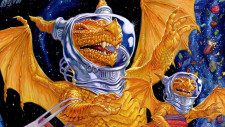

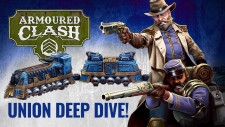
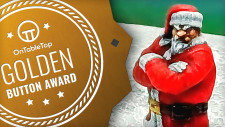





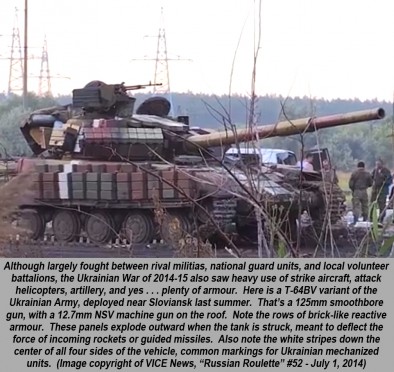
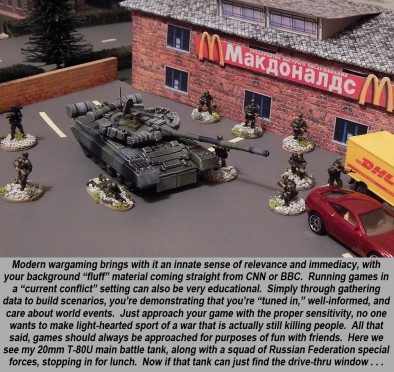
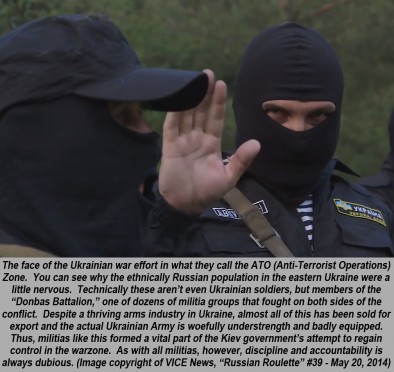
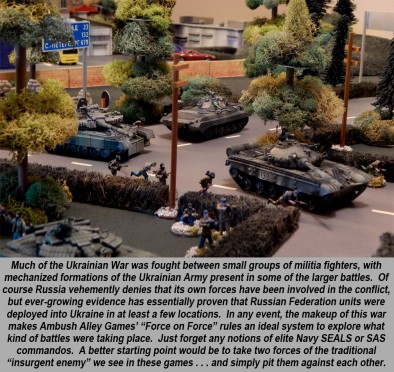
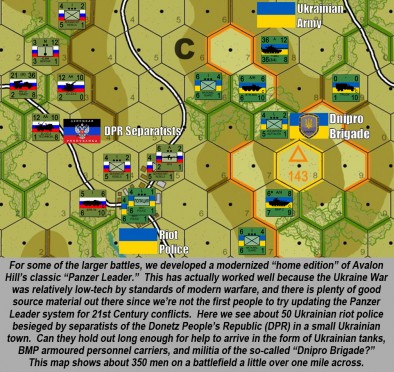
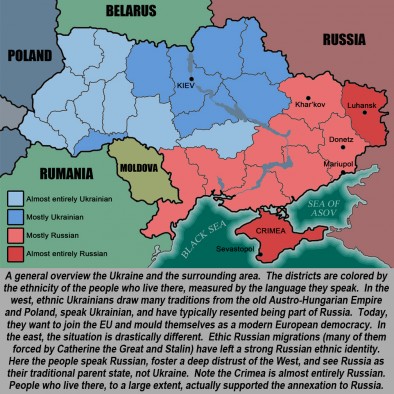
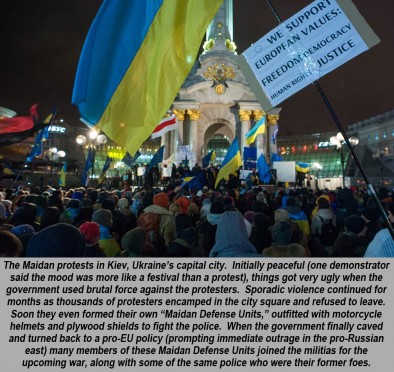
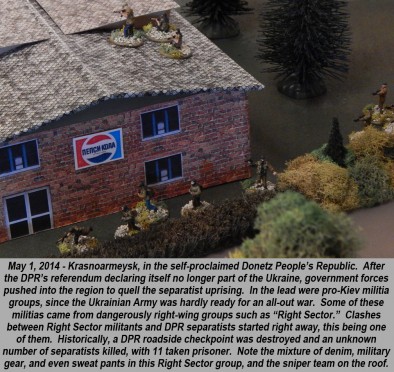
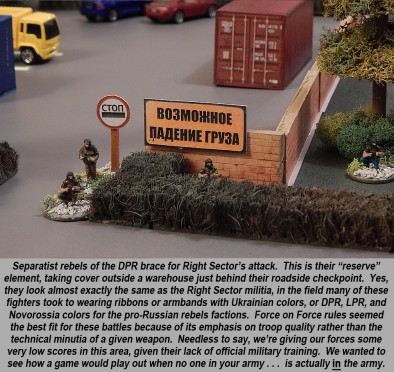
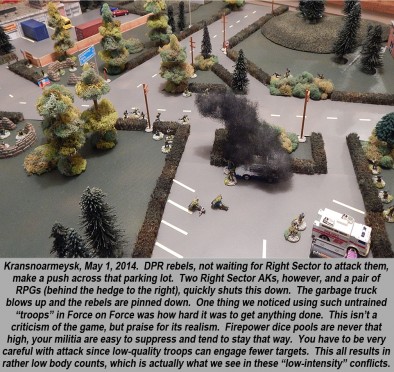
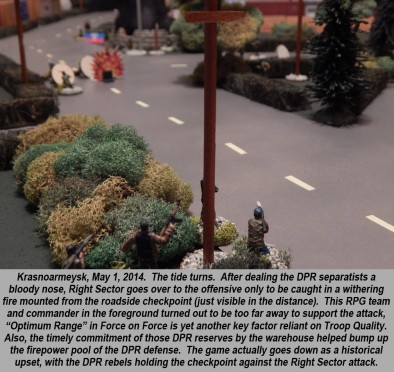
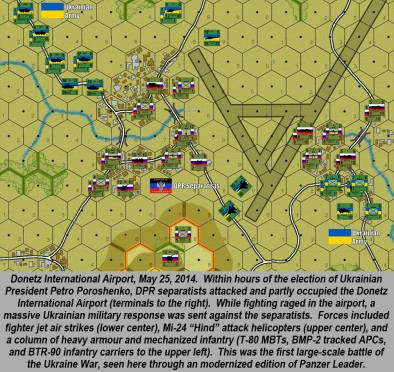
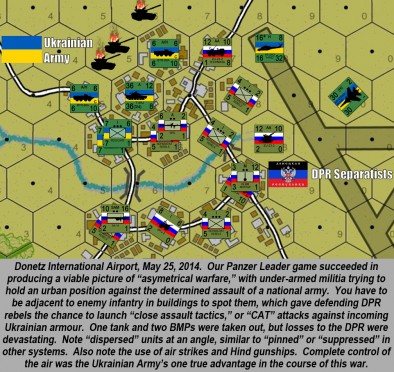


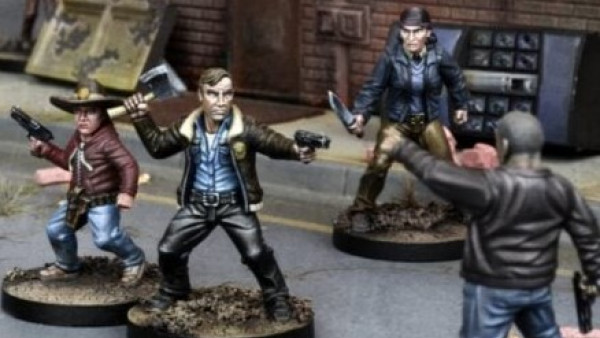


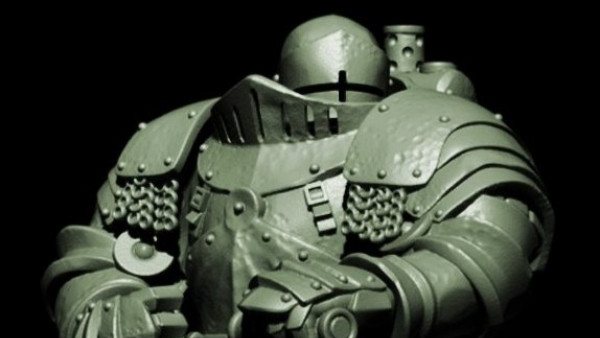
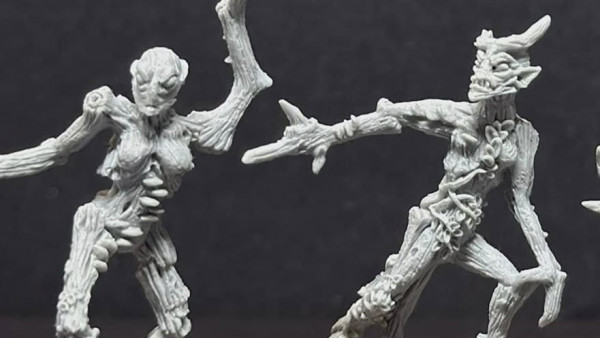
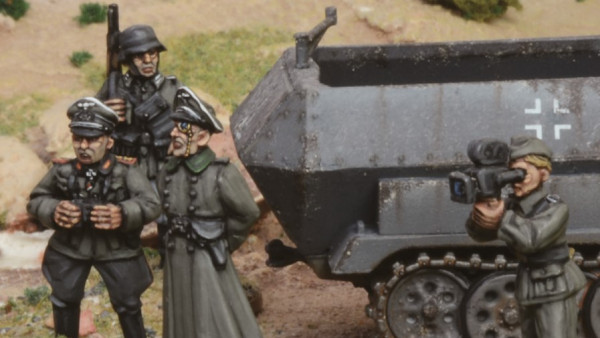
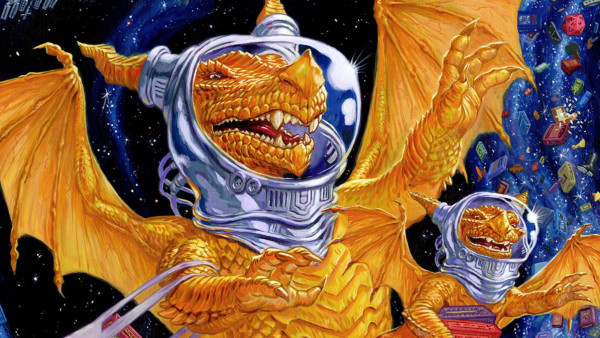
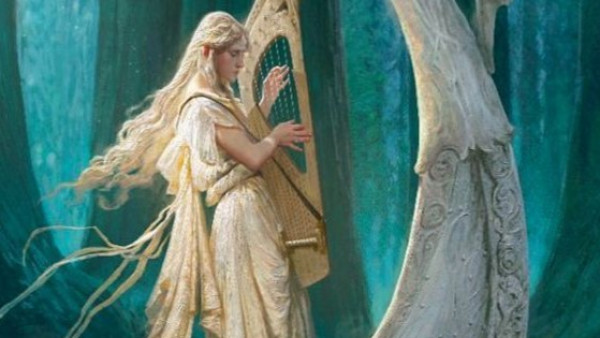
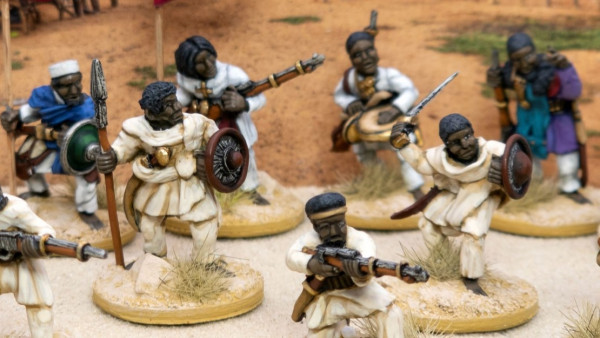
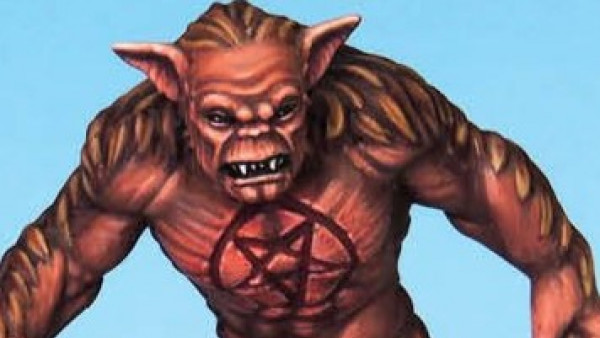
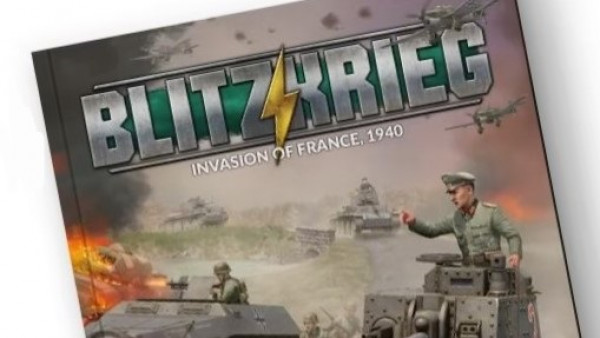
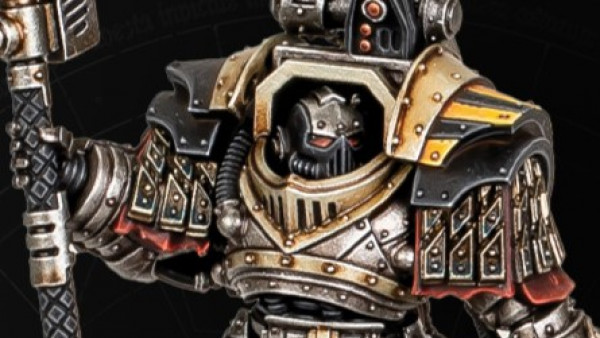
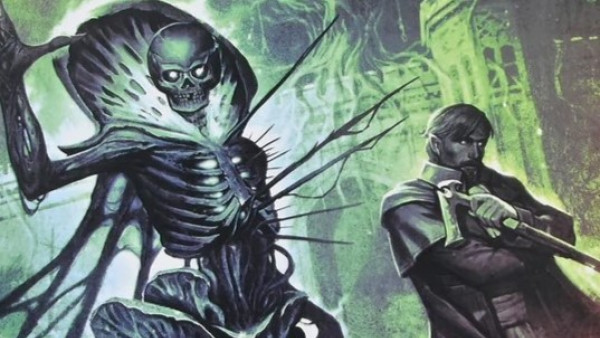
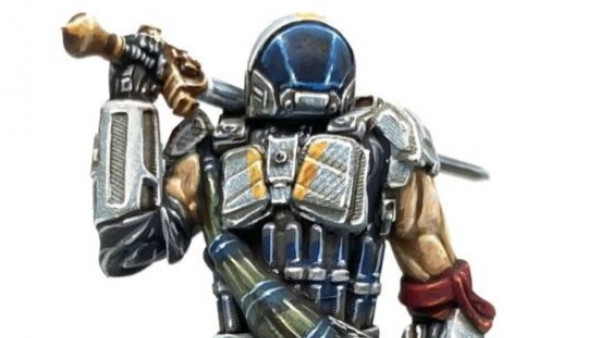

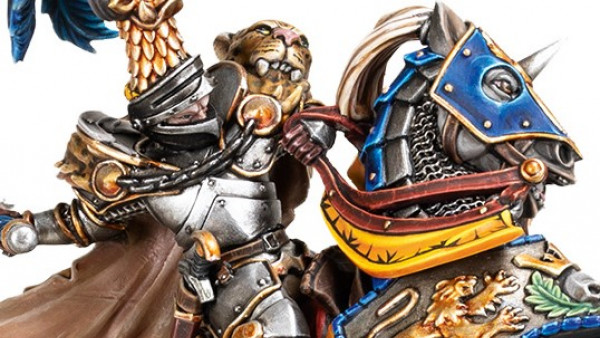

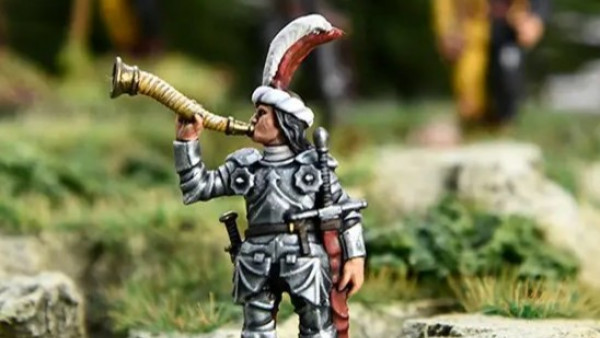

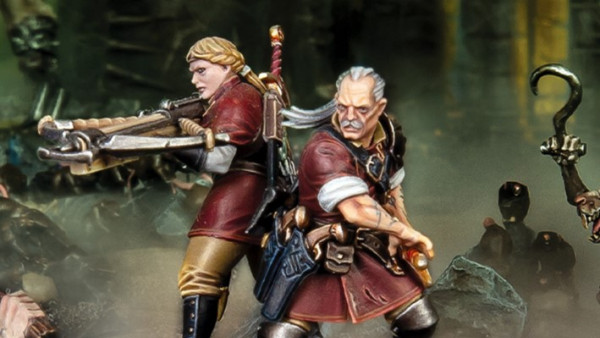
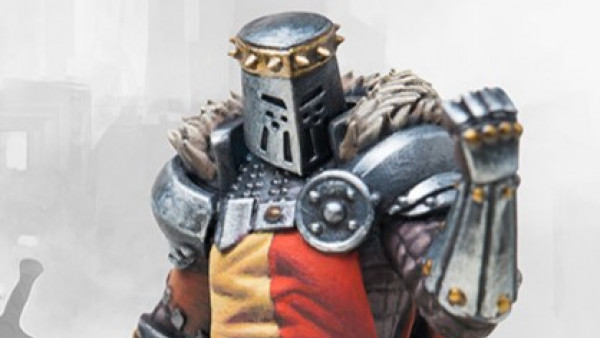
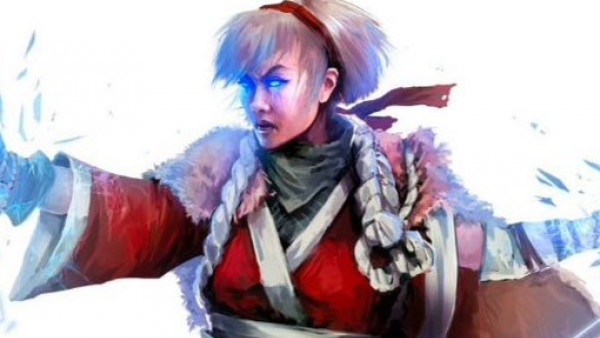

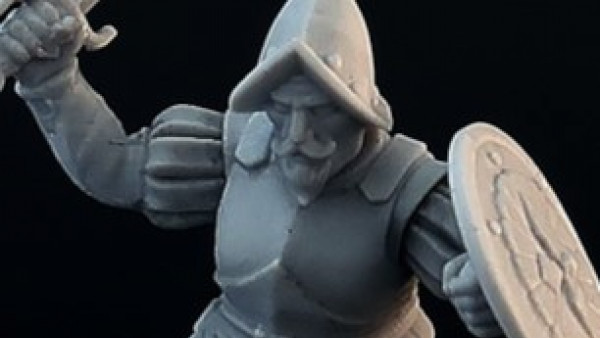

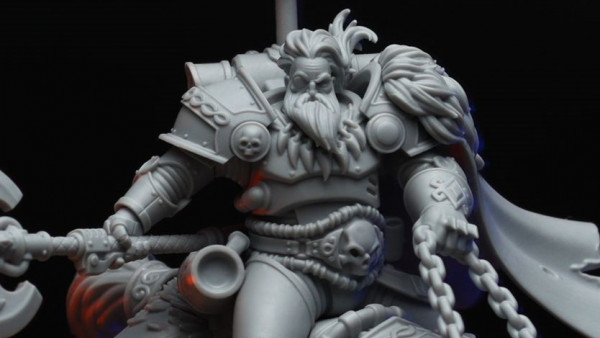

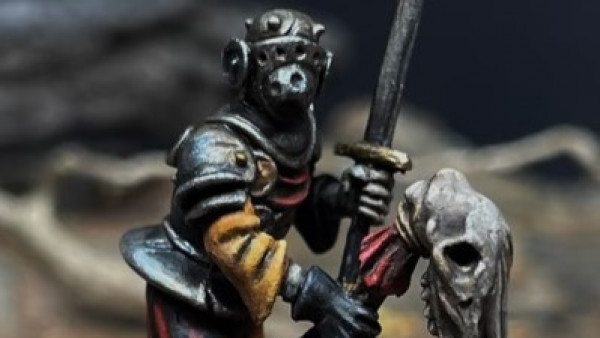

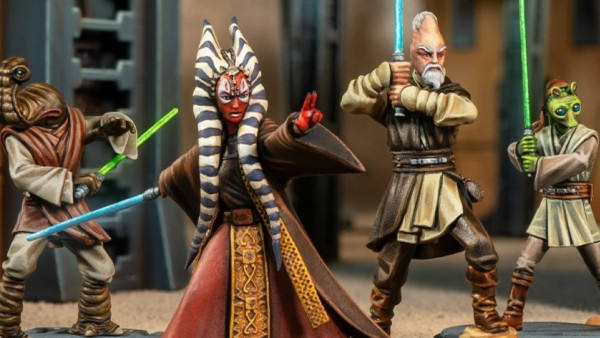
Great overview of the conflict @oriskany ! Another deadline met. Nice job on all the kit too! This promises to be another great series 🙂 .
It certainly had me thinking about the various factions involved with this. I knew a fair bit about this conflict when it was happening but had no idea about how convoluted it was between the warring parties.
It’s also fascinating seeing the tabletop of a modern battlefield.
BoW Ben
Thanks, @cpauls1 . As far as the kit goes, I’ve always been a 15mm 1/100 player, but once I finally bit the bullet and finally started working with 20mm 1/72, I gotta admit I’m really coming around to the new scale. And thanks very much, @brennon – indeed the factions are bewildering. Although there are essentially only two “sides,” (Kiev government and pro-Russian separatists), the number of these “volunteer battalion” and “territorial defense” militias is bewildering. Then you have whole units like the “Berkut” police paramilitaries that have, for lack of a better term, switched sides. Many police units in… Read more »
An excellent article. Thank you very much for posting.
Thanks very much, sir! 😀
Congratulations @oriskany for the start of what so far looks to be another great series of articles from you. In this article you have set the stage very well especially with the background and lead up to the battle. I liked the way you also introduced us to the workings of the tools you will be. I salute you for clearly mandating that the series will treat the topic with respect and sensitivity. After all there are too many families trying to come to terms with the loss of their loved ones on all sides. We too often forget how… Read more »
Thanks, @jamesevans140 – Indeed we’re trying to “handle with care” on this one. To date this conflict has claimed upwards of 6,000 lives, with 2.5 million displaced. But in every new report or mini-documentary I’ve seen, interviews with soldiers, civilians, and militia fighters (on both sides) are all asking that awareness be raised. If we can do that here in our own tiny little way . . . As I grow more and more familiar with the Force on Force rules, I’m finding them an increasingly good fit for what we’re trying to do here on the tactical/skirmish level. By… Read more »
Well written article. I’ve never went past fantasy/sci-fi in miniature wargaming, or board gaming, since they tend to be much more niche. Unless you already have a group dedicated to historicals it mostly just not going to happen. My most modern board game is still way back in the ancient world (Sword of Rome) ;P When it comes to current events, the Russian landgrab in Ukraine being one of many conflicts, I really dislike the “middle of the road” type arguments. What it boils down to is that Russia redrew the map of modern day Europe and stole a big… Read more »
I think because of the type of conflict that this is. A middle of the road approach to the events leading to the conflict needs to be taken, or an article like this can easily end up as a political debate.
Whilst I may well agree with the points you raised (I do) care has to be taken. I know of another wargaming forum where due to complaints raised about discussing the political aspects of Russia/Ukraine, it resulted in a blanket ban on discussing all topics on conflicts after 2000.
What you wrote makes sense as I certainly don’t want BoW to have to ban certain topics. As a person who has Hungarian parents, has spent lots of time in eastern- and central Europe and has studied some international politics (not my degree which is in another field) I find it quite difficult to separate politics from…well, pretty much anything. When the next article is published I’ll pinch myself in arm and keep telling myself “it’s only a game” 😉
As wargamers we need to be selective in our view. At the end of the day it is focused on a 6′ x 4′ table representing a small slice of a battlefield. An area that is supposed to be where the battle is decided. In this tiny space the carnage of one side besting another in the name of good social fun has no place for politics. While politics has no effect on the game a good dice roll does. Away from our table wars are fought to fulfil the political aims. So at this level war is only an… Read more »
I gotta agree with that, @jamesevans . 🙂 Honestly I would have preferred to skip past all the context and setup (i.e., the politics) and get straight o the “6×4” as you put it. But if I jumped straight into “DPR this” and “Sloviansk that” . . . the SBU, the FSB, Asov Battalion vs. Sparta Battalion . . . many readers would be justifiably lost. We always say that “fluff” or “background” is an important part of a game. Well, this is the fluff. If someone finds it offensive, that means they find war offensive. Makes sense, it’s a… Read more »
Thanks – @panzerkanzler and @deejay . 😀 I’ll agree that the Russian “landgrab” is a tricky subject, one of many reasons I stayed clear of the Crimea in this series. Also, there was no major fighting there, so it’s tough to put a wargame setting there. As far as eastern Ukraine goes, neither the DPR or LPR ever formally and unilaterally announced they wanted to “join” Russia (although many voices in these self-proclaimed republics wanted exactly that). Some wanted to be truly independent states, others wanted increased autonomy but to still be part of Ukraine. So I’m not 100% there… Read more »
If anything I’d say the Crimea was/is more valuable to Ukraine than the Donbas. Largely for its strategic value and potential for tourist development. In contrast the Donbas is full of loss-making heavy industry that were it not for concerns about mass unemployment would probably all just be best shut down. Although events unfolded differently in Crimea and Donbas, I think ‘land grab’ is still a fair description of what happened. For sure, Russia hasn’t formally annexed the later, but no one should be under any illusions that the seperatists would have held out on their own without Russian military… Read more »
Sounds like we have different sources on the economic viability of the Crimea. The Wall Street Journal has quoted back in March 2014: “The burden of propping up Crimea’s anemic budget—which costs Ukraine $1.1 billion a year—would become Russia’s responsibility if it succeeds in annexing the breakaway region, but the figure could end up being significantly higher if Russia tries to raise incomes there to its national average. Despite being a popular holiday destination, Crimea is unable to balance its books without substantial outside help and was expected to draw about 57% of its budget—or 3.03 billion hryvnia ($321 million)—from… Read more »
I think perhaps I made my case too strenuously @oriskany !
The Crimea is probably more expensive for Russia to administer than it was for Ukraine thanks to it being more geographically isolated and the impact of sanctions, but I wasn’t meaning to suggest that it was a source of all riches even before the annexation. I’m not sure that anywhere in Ukraine was doing well economically!
The point was more about not overestimating the economic value of the Donbas region. Or was meant to be!
Fascinating article, really makes you stop and think a bit, although i doubt i will ever be into modern war as a setting for gaming (i like my fantasy and sci fi too much ;)), and despite being fascinated with WW I and II i cant bring my self to have “fun” in that setting, as its too real a setting for my tastes (can honestly say bearing witness to the last post at the Menin gate, and visiting Tyne Cot and the nearby (highly contrasting) Langemark cemetries has had a lasting effect on me) i can certainly see the… Read more »
Thanks, @nakchak – I know what you mean. Even though I live, eat, sleep, and breathe historical gaming, being to places like Omaha beach and wading in that water, or walking the rows of the cemetery over Easy Red beach . . . can definitely put a different focus on your “game.” The next time your opponent rolls a fistful of dice and you’re taking a dozen figures off the board before they even get out of the landing boat, you DO pause for a second. That said, there are a lot of gamers out there (I think I’m one… Read more »
Nice article, mate. Cracking read. I’ve always been tempted to delve into modern stuff, (in the 28mm I know and love 😛 ) but I don’t think I’d want to go into The Ukraine for a couple of the reasons you mentioned at the beginning of the article. I’d even be wary of Iraq and Afghanistan, to be honest. Although I think the Falklands War could be interesting to look into…not sure if anyone does minis for that in 28mm, though.
Gripping Beast – MOFO range
Thanks, @crazyredcoat – * – “in the 28mm I know and love . . .” I’ll admit I would really like to see a nice T-80 done in 28mm. 😀 * – “I think the Falklands War could be interesting to look into . . ” Indeed that would be a great one. A naval / air element, two professional armies (as opposed to relatively unregulated militias), and relatively few civilians around. I’ll also be honest, I was a lot more comfortable with the idea of this article once news started coming back the fighting has tapered down to almost… Read more »
Very well done article… another great purpose for wargming modern conflicts (which is something I don’t often do) is to learn about then and to help to get into the mindset of the folks involved which, of course, helps with understanding.
Thanks, @mrharold . This is also my first spin into “modern” gaming (besides hypothetical WW3 stuff from the 80s, which almost doesn’t count), and a lot in the October 1973 Yom Kippur War. I know what you mean about learning the conflict and getting an understanding. Reading and watching good documentaries about the Maidan, you really get a feel for the pro-West mood in the conflict. Conversely, I’ve gotten a feel for the pro-Russian separatists point of view, even if I don’t really agree with it. One point in particular: Consider that 25 years ago, NATO’s influence ended at the… Read more »
Very well written article, and I look forward to the rest of the series. As an interesting heads up, if you are into PC wargaming at all I would suggest a look at Battlefront’s Combat Mission:Black Sea. Its a hypothetical Cold War gone hot(There’s a lot of that going around recently) in the Ukraine region in 2017 between NATO, the Ukraine, and Russia. At the moment the game contains US Army, Russian and Ukrainian ground forces with more options coming in expansions. Its a very, very tactical scale game (for a fellow Avalon Hill fan, it’s basically ASL on the… Read more »
ASL on the computer? What’s not to like? Always great to meet a fellow AH aficionado. 🙂 I was thinking of adding a small “hypothetical” section at the end of probably the last article. But given how close this subject matter is to a lot of people, and with the fighting finally winding down to a practical halt, I’m wondering if “imagining” the whole thing blowing back up again (and on a far grander scale) would be the right thing to do. I completely agree that Beasts of War should remain the “happy little place for all our gaming desires”… Read more »
Glad to hear. In the Designer’s defense, they actually thought up the scenario a few years before hostilities broke out as merely a realistic guise to get the best of the West and the East equipment-wise to smash heads. They were actually quite unnerved when things started to become reality, especially since their only other modern warfare game they have made was a hypothetical 2008 NATO invasion of……Syria. And they came up with that one in 2006. Fans of the games have kindly asked them to stop making any more modern wargames for the good of humanity. 🙂
Long ago, @silverstars , we used to play a home-written RPG where our characters would do all kind of crazy spec-ops stuff. In the course of designing missions for our players, we “accidentally” predicted the wars in Kosovo, Georgia, and some others.
It got to the point where I said: “New mission! The first thing that happens, we all win the lottery!”
It didn’t work. 🙁
Great job! I just love Force on Force and used it to create a scenario in 28mm
about italian special forces in Somalia in 1993, with AFVs and angry mobs. It
came out quite well, we used miniatures from Spectre and Venetia and AFVs
from Carlo Bardelli. A nice game and a good set of rules.
Jeep it up!
Thanks @fabione – I was very recently introduced to Force on Force (I’m still learning the rules as we go) – it was introduced to me by @grimwolfuk and unclejimmy, two great friends on this site. Man, Somalia in 93 . . . it seems you’re not “flinching from the tough ones,” either. 😀 My miniatures are coming from all over. Time is always an issue with these article series, so I’m going for small piece-count and ease of painting. My infantry are from Caesar Miniatures, mostly because of the price point. Very nice detail on them, but the plastic… Read more »
Well I helped develop Force on Force… and did the book pics.
Any questions I can try and help.
Man, that’s awesome, @piers . Thanks! I remember how helpful you were with the Battlegroup explorations of the Desert War, I’ll reach out if I run across any snags I can’t figure out in the rule book.
That is great to here and it will most certainly help the modern rules your working on.
you are touching very sensitive subject mate – good luck with that, for me as Poles Russians as country ( Putin) will always be enemies of the state. I still remember communism, an idea of CCCP in putin mind is really strong, good luck with your article Oriskany.
Respect you enormously Oriskany but I’m uncomfortable with this one. For some context I suppose it is relevant that I’;m a Moscow resident (for work anyway) and I’m acutely aware of the strong feelings about what is an ongoing conflict on both sides of the divide. I respect the fact that you’ve tried to be even handed here but for me, analyst or no, gaming a conflict that is still producing casualties is problematic. Admittedly I probably feel a similar way about gaming in general. Infinity and X-Wing are my current games (although I have a ‘historical’ World Eaters HH… Read more »
Thanks @radegast6 and @hedleyb for your honest feedback and input. Interesting how we had one post from both sides of the issue here back-to-back, it shows just how important it is to keep a balanced view (more than we can say for most media outlets, in all honesty). As you can probably guess, I respectfully don’t agree with this position. And in all honesty, I get just a **little** nervous around lines like “taste and decency.” But I can respect opinions and feelings of other people. We’re trying to handle this as delicately as we can, but frankly no article… Read more »
@oriskany Please don’t think the taste and decency line was an attack – just genuine musing on my part. I’m a literature teacher whose experience of the military has been filtered through Sassoon and Owen as well as numerous first hand accounts. I firmly believe it is vital to connect with warfare, and the experience of soldiers – but I find the line between game and recreation personally problematic. It is not for me to dictate your hobby and we all need to draw our own lines. For me current conflicts are problematic, and something I find personally ‘distasteful’ because… Read more »
@hedleyb – Understood, and thanks for following up. I guess I should mention that these games aren’t played with “beer and pretzels,” laughing and joking and trading “trash talk” while swiping figures from the table. I know those kinds of games, that kind of mood, and there’s absolutely nothing wrong with it. But if a subject like THIS were approached THAT way, I would be with you 100%. In such cases, the conflict doesn’t have to be “recent or ongoing” to cause me to wince. I’ve been in the military and seen this kind of thing (more accurately, the… Read more »
I din’t wanted you to stop writing it Oriskany, I just wanted to point out that this can be very “touchy” subject for some like me, I think you handled it good especially that you dont live in region of conflict, and you have never been in situation ( only read about it) that many/some of us faced on day to day basis.
“and you have never been in situation ( only read about it) that many/some of us faced on day to day basis.”
I’m going to have to answer that on a private message. Frankly, you have no idea where I’ve been and things I’ve seen.
Hi Mate glad i helped, I was thinking about using the Ukraine as setting for a campaign using the Spectre Rules (v2 when launched) and the starting mission was going to be an observation mission that goes wrong.
Have you looked at empress for the 28mm T80 and T90
Man, I just made the jump to 20mm. Now we’re starting me on 28mm?
Empress indeed makes soem awesome stuff. I can only imagine how that T-80 looks. 😀
A very interesting article, but I have to admit I find it very uncomfortable playing games based in a historical context, especially when it still directly affects the current political stage or is within current living memory.
Its strange as I am quite happy to watch historical war films of more recent conflicts – so perhaps I am being a little hypocritical.
But for these reasons I prefer to stick to fictional universes for my gaming.
No worries at all, @sheepman . In equal measure, the very things that put some people off of historical gaming are the very things that make it 90-95% of the gaming I do. That heavy, serious material that some find uncomfortable is actually a *requirement* for me and many others. Otherwise . . . why are we doing this again?
Of course, that’s not everyone’s opinion.
Is it weird that for a while all I could see was those people waving around a giant slab of greenstuff?…
Great article though 🙂
Man, now my board is under fire. 🙂 Just kidding. Thanks for the comment. 😀
One word mate, excellent. The initial draw down of the issues that led to this conflict were handled firm enough not to drop the thread and not too heavy handed to detract from the humanity of the situation. So far so good said the man as he fell from the multi storey and I can honestly say it is just heading towards a safe landing. I cannot think of any of us who has the ability to produce a well balanced and sympathetic approach. Will be storing this separately for future use and waiting for the next instalment. No more… Read more »
Appreciate the comment and support, @chrisg . I hope you’re right about the safe landing. 😀 Well, as Warren said during the XLBS, this was an experiment. We’ll see how it goes. Now that the “root issues” have been outlined I hope we can move forward to the facts of the engagements, tactical issues of this type of “militia v. militia” conflict, and aspects of rules that can reflect them.
Thanks again for the comment.
a nice article @oriskany the Ukraine is a bit of a hornets nest or a modern day Korea I hop not Korea still get in the headlines now & again.
Thanks, @zorg . Maybe someone wants to take on Syria. Now THERE’S a hornet’s nest I wouldn’t want to write about.
now that is a mess just waiting for the headlines of a NATO & Russian plane crashing in to each other. @oriskany
Bite your tongue, @zorg . 🙂 So far the US is automatically diverting all aircraft, combat and otherwise, the second any Russian place gets within 20 miles. Some people may see this “allowing” ourselves to be “bullied” by the Russians (sigh . . . really?) but it’s just common sense for two air forces who aren’t sharing air traffic control data.
it dues happen even on training flights with two pilots taking to each other. @oriskany
@zorg – All the more reason to be careful, I suppose. 😀
yup.
On the content side of things, great article! You mentioned enough history and politics to set the scene and give the conflict meaning without weighing it down in a lot of opinionated politics that might send things up in flames.
On the visual side of things. the larger scale looks AMAZING in the photos. I can see why people might switch to 20 mm from 15 mm in spite of the cost. Also, any battlefield that has a McDonald’s has to get extra credit! Now you just need to add in Warren’s ice-cream truck 🙂
Thanks very much as always for the support. Looks like I need it more than ever.
*auch* an heavy topic to start of the mid-term holiday with, but you did handle it well. As with any conflict there are at least 3 sides to this one the western, the eastern and the truth. And we all know what is the first casualty in war ?
Thanks very much, @rasmus .
I’ll start by praising a very well written article @oriskany on a very, very difficult subject. I’m definitely someone who feels very uncomfortable about this subject and had I been asked yesterday if I’d like to see this content on BoW I’d probably have said no. That said, I don’t believe in dictating what other people find fun and/or (more accurately I think) interesting and rewarding, so it wouldn’t make any sense for me to object to seeing this kind of thing covered on BoW. I could after all simply choose not to read it. I read every line of… Read more »
Thanks very much, @angelicdespot . The last thing I wanted was to cause anyone “trepidation.”
Not sure if I’ll be writing any more of these, to be honest.
I hope my reply hasn’t put you off. If anyone was going to do this well it was you. And although I read every line with trepidation, I did get to the end of the article without an ‘argh NOOOO!’ moment! Just one quibble – you say that after the Maidan revolution Ukraine signed an agreement to join the EU. I think you meant – as you said in the previous paragraph – an agreement with the EU. (That potentially opens the door to EU membership decades down the line but it’s not what was on the table then.) Oh,… Read more »
No worries, @angelicdespot. The BoW team and I certainly knew this could be a touchy subject, which is why I tried to handle it so carefully. But frankly, this is stuff that needs to be talked about.
Hopefully, future articles can focus more on the small scale, tactical detail and much less on the politics. We had to set up the context first, but now that’s out of the way. 😀
We’ll see what happens.
First may I thank you for your honest and open opinions, especially from someone so close to the centre of gravity. I find your stance that while this topic is not for you and would prefer that it was not here, but accept you don’t have the right to tell people what they can and can’t do commendable and refreshing. I understand your view point. For me I simply cannot play a wargame on the Vietnam War. I lost family members well loved to me to that conflict. Yet I would still be among the first to defend it if… Read more »
@jamesevans140 and @oriskany – I’ve been thinking more about this today and I think it’s not so much the gaming that bothers me about modern war gaming, but the politics. I think there is a big difference in playing, even laughing about ancient Greeks fighting other ancient Greeks, say, and doing the same with modern conflicts. But there’s a lot less difference between gaming contemporary conflicts and say, Vietnam or even WWII. Both wars still have very obvious impacts on the world and people today, so there’s no fundamental reason why I should find wargaming WWII acceptable, but Syria or… Read more »
Well, @angelicdespot – I think you’re giving way too much credit. 🙂 On a serious note, though, I think I see what you mean. In the course of research, I ran across plenty of very nasty “news” reports and opinion blogs (note the quotes around “news”), on both sides . . . although admittedly more from those with a pro-Russian slant. The inflammatory language on these sites certainly wasn’t making anything better.
@angelicdespot I am using @oriskany trick to reply to reply to you as I am out of reply buttons. I could not agree with more. My gaming friends and I believe there is no place on a 6′ x 4′ table, just the sound of rolling dice. If you have read any of the previous articles you would have noticed that @ordinary and I are friends but we live a hemisphere apart. We try to encourage and promote thought. Having said that we take no prisoners with each other either. In fact in one article a number of people here… Read more »
I remember that time you’re talking about, @jamesevans140 – we were kicking something around and a few onlookers on the thread thought we were arguing. We were saying: “No, no, it’s all good. 🙂 We do this all the time, it’s just usually in forums or PMs.” Shit, what the hell were we even talking about? I’ve probably said this before but I’ll mention it once again. Some readers are asking (to one degree or another) about “respect” or “politics” or other aspects of this subject matter. One – and this I KNOW I’ve said: I feel the politics were… Read more »
Great job @oriskany I am not going to comment on the article because I am kind of biased on the whole war, but the article is really well written and handles things with great care.
Understood, @yavasa , and thanks for your support. 😀 I guess this is the problem with “calling it down the middle,” people on either side (and as I’m sure you’ve seen, there are comments on both sides of this issue) will see you as leaning “the other way.”
Anyway, we’ll see.
Nah, the problem is connected to the cultural background, the distance to the conflict zone, experience, education etc. etc. @oriskany but it does not matter here since we are discussing wargaming. 🙂 As a historian I observe the things that begin to happen in Europe especially with a fear. The last two decades resemble the 20′ and 30′ of the XX century in many many aspects. 1) First of all, we have the big loser of the the Cold War – Russia. It underwent a period of liberal democracy but it slowly started to turn into more of an autocratic… Read more »
Those are some interesting parallels, @yavasa. Maybe I can add one more. As Germany looked vengefully and hungrily at territories it had lost after the Treaty of Versailles, does Russia / Putin look at former Soviet republics in a similar fashion? The rationales given for the annexation of Crimea sound oddly similar to those given for Germany’s annexation of Austria. Then again, as I said in an earlier post, this is how much of the southern United States was founded, including the state where I live. =D I definitely get that Russians “won’t say a bad word about the guy”… Read more »
Yes, you are right @oriskany about the Soviet republics. This is a sphere of influence Kremlin assumes belongs to Russia. Hence we have the Russian combat aircraft flying in and out of sovereign countries airspace, kidnapping of military intelligence agents on sovereign lands, getting involved in conflicts in sovereign countries just because someone asked for help. Not to mention the “origins of Russia” rhetoric Putin uses while talking about some parts of Ukraine. This summer while he was visiting Crimea he went underwater in a batyscaphe and said something more or less “roots of Russia reach deep”. Yes, it is… Read more »
Indeed, @yavasa – I fully confess to a lot of guesswork. Such is one of the pitfalls of modern or current-conflict gaming, and definitely in the course of this project there is some of it. Corruption in the government and army of the Ukraine is touched on briefly in the second article series. This isn’t to point the finger at anyone, but just to explain (to a degree) what kind of weapons these troops are armed with . . . or aren’t armed with. People who Google the Ukrainian Army might find all kinds of great weapons (T-84 “Oplot” battletank,… Read more »